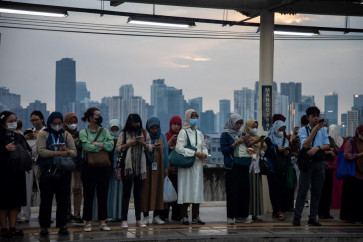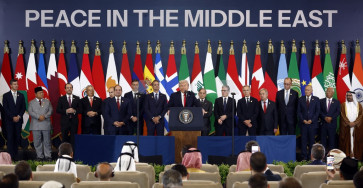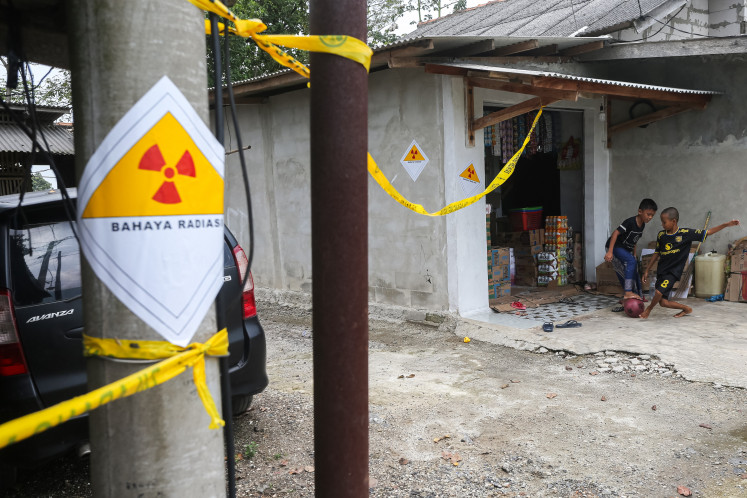Popular Reads
Top Results
Can't find what you're looking for?
View all search resultsPopular Reads
Top Results
Can't find what you're looking for?
View all search resultsTo veil or not to veil?
The question of veiling has always been a heated debate, while in the past three decades Indonesia’s religious landscape has changed dramatically
Change text size
Gift Premium Articles
to Anyone
T
he question of veiling has always been a heated debate, while in the past three decades Indonesia’s religious landscape has changed dramatically. Back in 1993, when veiling was not common nor an essential part of the identity of an Indonesian Muslim woman, I started to cover my head.
At my secular government school, the headscarf had never been part of the uniform and students who wore the veil were doing so out of their own free will.
There was no such heaven and hell narrative that scrutinized our physical appearance. Presentation and morality was not associated with religiosity in the public space.
My decision to begin veiling was against the background of growing modernity and globalization, where veiled girls were considered kampungan (from the countryside), fundamentalists or extremists.
Schoolgirls who decided to adopt this outfit daily while studying outside of an Islamic school were often considered as excessive. The modern form of Islamic dress was regarded as merely copying the Middle Eastern style and one could still be considered a good and pious Muslim without the jilbab (headscarf.)
Ironically, such criticism often came from Muslims, both men and women, old and young, educated and non-educated. People would voice their concern and assume that we should share the same views.
Discrimination faced by veiled women was still rampant despite Indonesia having the largest Muslim population.
Veiled women often failed to get jobs in the public and private sectors and were banned from wearing Islamic style clothing at work. Those who insisted on wearing the veil found they could no longer be promoted, regardless of their qualities and qualifications. I still remember my school refusing to take our official pictures for our diplomas if we covered our heads. It forced us to remove the veil and no one dared challenge the discrimination against us.
Today, veiling has a better image and is regarded with modernity instead of backwardness. Thanks to the Islamic resurgence, more Indonesian women and men embrace the Islamic form of dress that is openly celebrated in the fashion industry.
Indeed, veiling has undergone a paradigm shift. While Muslim women now have more freedom for religious expression in everyday life, often the freedom not to wear the veil has become more restricted.
Muslim women who opt not to wear the headscarf are constantly under public scrutiny. As such women are often judged as infidels or hypocrites, their religious faith and understanding is often questioned, as if the piece of fabric is the sole standard for being a devoted and pious Muslim women.
The standard of morality is measured by the headscarf and the failure to wear it invites comparison to a prostitute.
Discourse over sexual harassment or crimes against women often place the women as the problem.
People focus on whether their clothing was provocative, sexy or revealed their aurat (intimate body parts), overlooking the state’s failure to protect women and the collective failure to educate men in also being modest.
While veiling has become a norm in Indonesia’s religious landscape compared to 30 years ago when it was marginal, many now see veiling as a mandatory religious statement, often forcing women to cover their head and neck.
This leaves women with virtually no right to express their identity and free will.
The case of Rina Nose, a television presenter actually named Nurita Permata Putri, who decided to give up wearing her hijab has triggered a debate over personal choice.
The personal is always political, as they say, reflecting that her personal course of action is deemed to challenge the mainstream perspective over religious obligation.
While for years I encountered stigma, discrimination and hate speech against donning the jilbab, today I can relate to what Rina and others who become the object of criticism for their non-compliance to Islamic religious clothing.
Just as I experienced, Muslim women have been the subject of being labelled an “other” by the society in which they live in, considered and treated as different and alien.
Today’s society is different from Indonesian society in the past, but the bottom line is exactly the same, where the freedom of expression for women is not recognized.
Our notion of womanhood has always been the subject of definition by society and the state, as if women have no brains or perspective on what to wear.
Once upon a time, we were fighting for freedom of religious practice and expression in the public sphere as the authoritarian regime had restricted it.
So, today, why do we have to compel women to wear something that they do not choose to? Once we, the veiled women, had to live through stigmatization and oppression. Why do we now have to stigmatize those who choose not to wear the veil?
___________________________________
The writer is a PhD candidate in the Department of Sociology, National University of Singapore.










